What is CDN? Using Content Delivery Networks to Optimize Your Website
- Published on

- What is CDN (Content Delivery Network)?
- The difference between websites using and not using CDN
- Benefits of CDN
- Increase page load speed
- Reduce load on the origin server
- Enhance stability and scalability
- Improve website security
- Save bandwidth costs
- When should you use a CDN?
- Websites with high or unpredictable traffic
- Websites with a global user base
- Websites with many static resources or multimedia content
- Websites needing improved security
- Websites aiming to reduce bandwidth costs
- How does CDN work?
- Storing static content on distributed servers
- Caching and storing content
- Handling dynamic requests
- Optimizing bandwidth and latency
- Safety and security
- Limitations of CDN
- High service cost
- Complex configuration and management
- Negative impact if the CDN encounters issues
- Limitations in distributing dynamic content
- Control and security concerns
- Compatibility issues with certain web applications
- What content is delivered via CDN over the Internet?
- Static content
- Dynamic content
- Large downloadable resources
- Content for mobile applications and APIs
- Basic forms of CDNs
- Pull HTTP/Static CDN
- POST/PUSH/PUT/Storage CDN
- Streaming CDN
- Popular CDN providers
- Cloudflare
- Amazon CloudFront
- Akamai
- StackPath
- KeyCDN
- What factors should you consider when choosing a CDN?
- Location of edge servers
- Performance and speed
- Security features
- Scalability and flexibility
- Cost
- Conclusion
What is CDN (Content Delivery Network)?
CDN (Content Delivery Network) is a system of distributed servers built to optimize the delivery of web content. These servers are located in various locations worldwide, helping deliver content to users from the closest location to them, rather than from the website's original server. This helps increase page load speed, reduce latency, and improve the user experience.
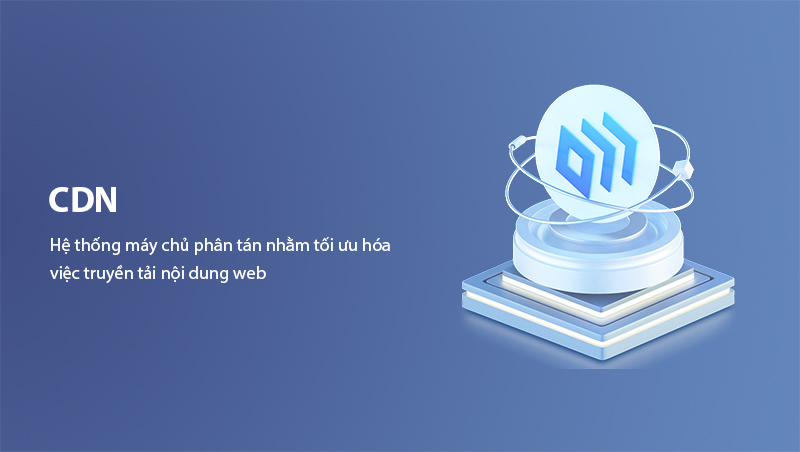
Basically, when a user accesses a website, static content such as images, videos, JavaScript files, and CSS is distributed from the nearest CDN server to the user's geographic location. For example, if a website’s main server is in the United States, users from Vietnam will be served content from a closer server, possibly in Singapore or Hong Kong, instead of loading it from a distant main server. This not only minimizes loading times but also helps save bandwidth and reduce the load on the original server.
“CDN not only improves page load speeds but also provides exceptional overall performance benefits for websites.”
The difference between websites using and not using CDN
When a website uses CDN, the most noticeable difference is a significant improvement in page load speed and performance. Without a CDN, all content requests must pass through the original server, which can lead to overload, especially when traffic increases. This not only reduces page load speeds but also negatively impacts the user experience.
One common issue with not using a CDN is latency. For instance, when users from Vietnam access a website hosted on a server in the United States, geographic distance and bandwidth congestion can cause long loading times. In contrast, with a CDN, data is delivered from a closer server, reducing latency and increasing page load speeds.
Moreover, using a CDN helps offload the original server during high traffic situations, such as large-scale promotions or live online events. Meanwhile, without a CDN, the original server may struggle to handle multiple concurrent requests, leading to overload and service interruptions.
“CDN is the perfect solution to help websites maintain stable performance even when facing high traffic volumes.”
Benefits of CDN
Content Delivery Network (CDN) brings numerous outstanding benefits to websites, especially in terms of enhancing user experience and optimizing website performance. Here are some notable benefits of using a CDN:
Increase page load speed
One of the most critical benefits of CDN is its ability to increase page load speed. CDNs store copies of content on multiple servers distributed globally. When users access the website, resources like images, videos, and other static files are loaded from the nearest server to them. This minimizes latency and speeds up page load times, especially for users in different geographic locations.
Reduce load on the origin server
When using a CDN, edge servers handle most user requests instead of routing them directly to the origin server. This reduces the load on the origin server and minimizes the chances of overloading, particularly during peak traffic periods. As a result, the origin server can focus on processing more complex tasks like dynamic data and improve overall performance.
Enhance stability and scalability
CDNs enhance website stability by distributing loads evenly among servers within the network. This is particularly helpful in cases of sudden traffic surges, such as marketing campaigns, special events, or Distributed Denial of Service (DDoS) attacks. The scalability of a CDN allows websites to handle large traffic volumes without experiencing issues or performance drops.
Improve website security
Many CDN providers now offer advanced security features such as DDoS protection, SSL/TLS encryption, and Web Application Firewall (WAF). These features help protect user data and prevent external threats. Using a CDN not only safeguards the website from attacks but also enhances its reliability and security.
Save bandwidth costs
Using a CDN reduces bandwidth costs for developers and website owners. Since CDNs distribute content from edge servers, the amount of bandwidth needed to transfer data from the origin server is minimized. This can help reduce costs for server maintenance and optimize the budget for IT infrastructure.
When should you use a CDN?
Integrating a CDN into a website is not always necessary, but in many cases, it can make a significant difference in terms of performance, security, and user experience. Below are some specific situations when you should consider using a CDN:
Websites with high or unpredictable traffic
If your website has high or unpredictable traffic, especially during promotions, events, or marketing campaigns, a CDN will help minimize the risk of overloading the origin server. It can distribute page load requests to multiple distributed servers globally, ensuring smooth website performance without interruptions.
Websites with a global user base
If your website serves users in different geographic locations, a CDN will improve global page load speeds. CDN edge servers will deliver content from the closest location to the user, reducing latency and ensuring a fast and stable user experience no matter where they are.
Websites with many static resources or multimedia content
If your website contains numerous static resources like images, videos, CSS, and JavaScript files, a CDN will help reduce the load on the origin server and ensure quick distribution of content. Using a CDN optimizes the delivery of large content and creates a smoother user experience, especially for media, entertainment, or e-commerce websites.
Websites needing improved security
If your website is at risk of DDoS attacks or requires enhanced security, a CDN can protect your site from such attacks. Security features integrated into many CDN services, such as Web Application Firewall (WAF), help block unauthorized access and protect the website from network threats.
Websites aiming to reduce bandwidth costs
Websites can significantly save bandwidth costs when using a CDN because resource requests are distributed from edge servers instead of the origin server. This helps reduce bandwidth usage on the main server, especially during high-traffic periods.
If your website has one or more of these factors, implementing a CDN will help enhance performance, security, and cost optimization. Don’t forget to consider your website's current situation and specific requirements when deciding to use this service!
How does CDN work?
To better understand how a CDN benefits your website, let’s delve into how a CDN works. A CDN optimizes page load processes and improves website performance by using edge servers distributed across various geographic locations.
Storing static content on distributed servers
CDNs primarily work by storing static content such as images, videos, CSS, and JavaScript on edge servers. These servers are placed in different locations worldwide, reducing page load times by shortening the distance between users and servers.
When a user accesses your website, the CDN will automatically select the nearest server to their location to deliver data. This process enhances page load speed and reduces latency, providing users with a smooth experience.
Caching and storing content
One of the critical components of CDN is caching, which involves saving a copy of website content on edge servers. When a user accesses the website, the CDN checks the cache to see if the data has already been stored from previous visits.
If the content is cached, the CDN will return the stored content without fetching it again from the origin server. This reduces the origin server’s load and saves bandwidth, speeding up page loads. If the content is not cached, the CDN retrieves it from the origin server, then stores a copy on edge servers for future access.
Handling dynamic requests
Although CDNs primarily serve static content, some modern CDN services also support dynamic content, which includes constantly changing data like user account information or online transactions. These dynamic requests are sent directly to your origin server.
Unlike static content, dynamic content is not typically cached by CDNs. Instead, CDNs act as a bridge, forwarding requests to the origin server. This process helps optimize bandwidth and reduce the origin server’s load when handling rapidly changing data.
Optimizing bandwidth and latency
CDNs help reduce latency and optimize bandwidth by distributing loads among servers. Instead of all traffic being directed to a single server, CDNs share loads among edge servers. This not only reduces congestion but also enhances the system’s capacity, especially during high traffic volumes.
Safety and security
CDNs also offer security features such as SSL/TLS encryption, which protect user data during transmission between the server and browser. Some CDN services integrate advanced security features like Web Application Firewall (WAF) and DDoS protection, safeguarding websites against external attacks.
In summary, CDNs work through caching, content distribution, and page load optimization by using geographically distributed edge servers. This mechanism not only speeds up user access but also reduces the load on origin servers, improves overall performance, and adds an extra layer of security to your website.
Limitations of CDN
Although CDN offers many benefits, it also has some limitations that need to be considered when deciding to implement this content delivery network for your website.
High service cost
One of the biggest limitations of using a CDN is cost. Free CDN services may have limited features and performance, while premium services often charge fees based on bandwidth or the number of access requests. This can create a financial burden, especially for small businesses or websites with limited budgets. Businesses need to calculate costs reasonably and ensure that the benefits of using a CDN outweigh the expenses.
Complex configuration and management
Integrating and managing a CDN can be quite complicated, especially for large websites or those with high technical requirements. Configuring edge servers, managing cache, and distributing resources may require technical expertise. For small websites or development teams with limited experience, this process can become challenging and time-consuming.
Negative impact if the CDN encounters issues
While CDNs enhance reliability and website performance, if a CDN server experiences issues, all resources might not be served correctly. This can cause service disruptions and degrade user experience. Websites overly dependent on CDNs may face difficulties if their services are interrupted, directly affecting users.
Limitations in distributing dynamic content
CDNs primarily work effectively for static content such as images, CSS, and JavaScript. However, for dynamic content or resources that frequently change (e.g., user information or real-time transactions), distribution via CDN can be challenging. Some CDNs do not support dynamic requests or user-specific data well, leading to the need for separate solutions for these resources.
Control and security concerns
When using a CDN, you are distributing your content through external servers, which can result in losing some control over data management and security. If not properly configured, using a CDN can introduce security risks such as Man-in-the-Middle (MITM) attacks or exposure of sensitive information if incorrect security protocols are used.
Compatibility issues with certain web applications
Some web applications or services may not be fully compatible with CDNs. Applications that process real-time data or interactive data between users and servers may struggle when distributed through CDN servers. This requires developers to make additional adjustments to ensure the CDN works effectively with the dynamic features of the website.
Although CDNs offer many powerful benefits, these limitations should be carefully considered by businesses before deciding to deploy them. Understanding the drawbacks can help you devise optimal solutions and avoid unnecessary risks when using this content delivery network.
What content is delivered via CDN over the Internet?
When talking about CDNs, we often think of delivering static content like images and videos. However, CDNs can deliver a variety of other content over the Internet. Modern CDN services can optimize and distribute various types of data, including dynamic content and other high-speed transmission requirements. Below are the common types of content typically delivered by CDNs:
Static content
This includes content that can easily be stored and distributed via CDNs, such as:
- Images: Static images (JPEG, PNG, GIF) are among the most commonly distributed content by CDNs. CDNs help reduce page load time by serving images from edge servers close to users.
- Videos: Videos are another bandwidth-intensive content type. CDNs reduce load on the origin server by distributing videos from distributed servers. Streaming CDN services often support high-resolution, smooth-quality video.
- CSS and JavaScript: While small in size, CSS and JavaScript files play a critical role in ensuring smooth website functionality. CDNs help minimize latency and load times for these files.
- Fonts and icons: Files like Google Fonts or web icons (SVG, font-based icons) are also distributed by CDNs to optimize page load times.
Dynamic content
Although CDNs primarily serve static content, modern CDN services can also support dynamic content, which includes time-sensitive data such as:
- User information: Data such as user accounts, shopping history, and online carts can be transmitted via CDNs to reduce latency in interactive user experiences.
- Real-time transactions and data: Services such as financial transactions or real-time data (e.g., live sports matches) require CDNs to transmit quickly without significant delays.
Large downloadable resources
Large resources like software, operating system updates, and heavy file replicas can also be distributed via CDNs. Using a CDN in this case helps reduce the load on the origin server and speeds up the download process while ensuring good performance even with a high number of simultaneous users.
Content for mobile applications and APIs
CDNs are also highly useful for distributing data for mobile applications and APIs (Application Programming Interfaces). By delivering data from servers closer to users, CDNs help accelerate application access and reduce latency when using APIs. This is crucial for mobile applications that require fast server responses.
In summary, CDNs not only help distribute static content but can also optimize the delivery of dynamic content and other large resources. By using edge servers to distribute content from locations close to users, CDNs help reduce latency and improve user experience across mobile and desktop devices.
Basic forms of CDNs
There are several CDN forms that businesses and developers can choose from to optimize content delivery. Each form of CDN operates and applies differently, depending on the requirements and goals of a project. Below are the basic CDN forms you need to know:
Pull HTTP/Static CDN
This is the most common and easiest form of CDN to implement. In this model, when a user requests a file (e.g., image, video, or static document), the origin server sends the file to the CDN server. If the file has not been stored on the CDN's edge servers, the CDN server will "pull" the file from the origin server and cache it for subsequent requests.
- Advantages: Easy to implement, cost-effective, and requires minimal data management.
- Disadvantages: There may be latency on the first request as the file needs to be fetched from the origin server.
POST/PUSH/PUT/Storage CDN
Unlike Pull CDN, Push CDN requires you to actively upload data to the CDN servers. When using this model, all files or content to be distributed are pushed directly to the CDN servers instead of the origin server.
- Advantages: Faster loading speeds as files are already on the CDN servers, reducing latency for subsequent requests.
- Disadvantages: Requires proactive management and monitoring of uploaded files.
This model is often used for applications requiring the distribution of dynamic content and frequently changing data.
Streaming CDN
Streaming CDN specializes in delivering and distributing streaming content, such as live video or online audio. This type of CDN optimizes the transmission of video and audio content over the Internet, ensuring quality and smoothness even under low bandwidth conditions.
- Advantages: Optimized performance for streaming, delivering high-quality video, and reducing latency.
- Disadvantages: May require high bandwidth, and costs can be higher compared to other CDN forms.
Streaming CDNs are widely used in services like Netflix, YouTube, or Spotify to deliver high-quality video and audio content online.
In summary, depending on the purpose and requirements for content delivery speed, you can choose one of the above CDN forms. Understanding these forms will help you optimize costs and efficiency when implementing CDNs for your website or application.
Popular CDN providers
When selecting a Content Delivery Network (CDN), an important factor is finding a provider that matches performance, security, and cost requirements. Below are some popular CDN providers you can consider to enhance user experience for your website.
Cloudflare
Cloudflare is one of the leading CDN providers globally, known for its strong security features and high speed. Their services include:
- Strong DDoS protection.
- Website acceleration with an extensive global network.
- Free SSL/TLS security features.
- Free tier for small or personal websites.
Cloudflare has server networks in over 200 cities worldwide, optimizing page load times and reducing latency for users.
Amazon CloudFront
Amazon CloudFront is AWS's CDN service, known for its deep integration with other AWS services. With CloudFront, you can easily:
- Automatically distribute static and dynamic content.
- Integrate with other AWS services such as S3, EC2, and Lambda.
- Provide fast user experiences globally through a distributed network of servers.
Amazon CloudFront also offers many options for security and flexible configurations, making it suitable for businesses requiring a robust and scalable solution.
Akamai
Akamai is one of the long-standing and powerful CDNs, with an extensive network of data distribution servers. Akamai is renowned for serving high-bandwidth-demanding content such as video or online streaming applications. Akamai's services include:
- Optimizing page load performance for websites and applications.
- Advanced security services, including DDoS protection and Web Application Firewall (WAF).
- Detailed analytics tools for user behavior and network performance.
Akamai is ideal for large companies or businesses needing high traffic handling and strict security requirements.
StackPath
StackPath (formerly MaxCDN) is a notable CDN provider offering solutions tailored for small to medium-sized businesses. Some features of StackPath include:
- Simple and easy-to-understand service packages.
- Seamless integration with popular Content Management Systems (CMS) like WordPress.
- Strong security features including free SSL and DDoS protection.
StackPath also provides quick customer support and ease of use, making it highly suitable for small businesses and web developers.
KeyCDN
KeyCDN is a cost-effective CDN service that still delivers good performance and security. With KeyCDN, you can:
- Accelerate websites and applications globally.
- Provide free SSL services and support HTTP/2.
- Easily integrate with CMS platforms and others.
With affordable pricing and high performance, KeyCDN is perfect for small websites or developers looking to optimize speed without spending too much.
Choosing a CDN provider that fits your needs will improve the performance, security, and scalability of your website or application. Consider factors such as cost, server locations, security features, and integration capabilities when selecting the right CDN service.
What factors should you consider when choosing a CDN?
Selecting the right Content Delivery Network (CDN) for your website or application is a crucial decision that directly impacts performance, cost, and user experience. Here are the important factors to consider when choosing a CDN service:
Location of edge servers
A critical factor when choosing a CDN is the geographical location of the edge servers. Edge servers are points where the CDN stores content close to the end users. The closer the distance between users and servers, the faster the page load time. Therefore, you should choose a CDN with a well-distributed network of servers and good coverage in your target regions.
For instance, if your target audience is primarily in Asia, look for a CDN with robust edge servers in that region. This will help reduce latency and improve load times for users.
Performance and speed
Speed is a decisive factor in providing a smooth user experience. You should check whether the CDN can deliver fast distribution speeds not only in your main region but globally. Leading CDN providers often offer high bandwidth and the ability to handle large volumes of concurrent users without congestion.
Additionally, if your website provides video or streaming content, you should evaluate the CDN's streaming support, as high-quality video delivery requires a powerful and stable network.
Security features
Security is a non-negotiable factor when selecting a CDN. Ensure that the CDN you choose offers robust security features to protect your website from threats like DDoS attacks, man-in-the-middle attacks, or other vulnerabilities. Some common security features to look for include:
- SSL/TLS encryption: Encrypts data between users and the server.
- DDoS Protection: Safeguards the website from Distributed Denial of Service (DDoS) attacks.
- WAF (Web Application Firewall): A firewall to block web-based threats.
Scalability and flexibility
As your website grows, traffic and data demands will increase. Therefore, you need a CDN capable of scaling flexibly to meet rising demands without disruption. Check for the ability to accelerate dynamic content and distribute loads evenly in the event of traffic spikes.
Moreover, choosing a CDN that allows easy customization is also essential. Features like cache configuration, traffic flow control, and customization options will help you optimize the CDN to suit your website's specific requirements.
Cost
Cost is another significant factor when choosing a CDN, as it can vary based on bandwidth, request volume, and additional services. You need to evaluate the pricing of CDN service plans and compare them with your budget. Some CDN providers offer free plans or trial packages, enabling you to test the service before making a long-term commitment.
Additionally, check for potential hidden costs related to increased bandwidth, data storage, or additional features like security.
Selecting the right CDN service will help optimize your website's performance, enhance the user experience, and ensure data security. By considering the above factors, you can find the most suitable CDN solution for your needs.
Conclusion
Content Delivery Network (CDN) has become an essential part of optimizing performance and security for websites and online applications. Using a CDN not only helps reduce latency and improve page load speeds but also secures data and enhances user experience globally. Especially in an era where users access websites from various geographical regions, a robust and efficient content delivery network plays a key role in maintaining user satisfaction.
In summary, properly implementing a CDN will make your website not only faster but also more secure, while enabling smooth and efficient access for users worldwide. Start exploring and choosing the right CDN provider to enhance your website's performance today.
Latest Posts
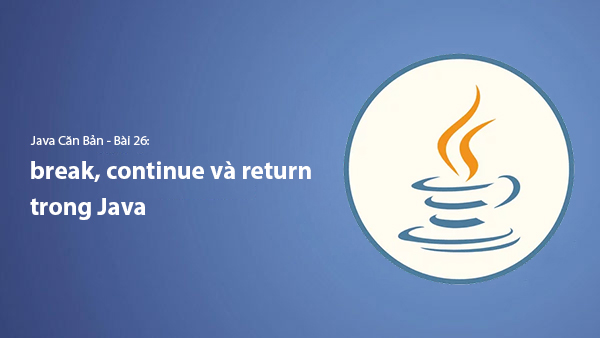
Lesson 26. How to Use break, continue, and return in Java | Learn Java Basics
A guide on how to use break, continue, and return statements in Java to control loops and program execution flow effectively.

Lesson 25. The do-while Loop in Java | Learn Basic Java
A detailed guide on the do-while loop in Java, including syntax, usage, examples, and comparison with the while loop.
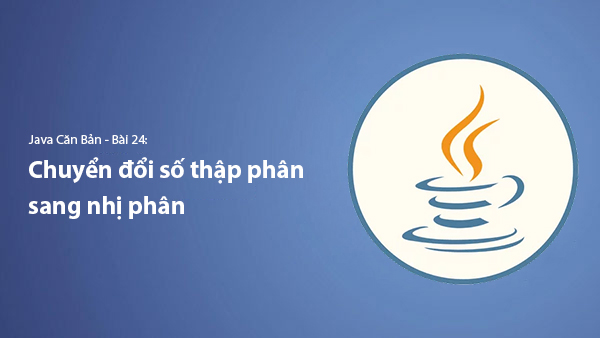
Lesson 24. How to Convert Decimal to Binary in Java | Learn Basic Java
A guide on how to convert numbers from the decimal system to the binary system in Java using different methods, with illustrative examples.

Lesson 23. How to Use the While Loop in Java | Learn Java Basics
Learn how to use the while loop in Java with syntax, real-world examples, and practical applications in Java programming.
Related Posts
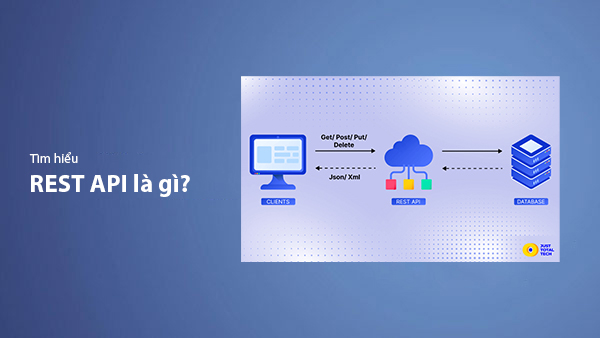
What is REST API? Complete A-Z Knowledge About REST API
REST API is one of the essential concepts that every backend developer needs to fully understand. This article provides comprehensive knowledge about REST API, including its definition, principles of operation, and how to build a standard RESTful API.
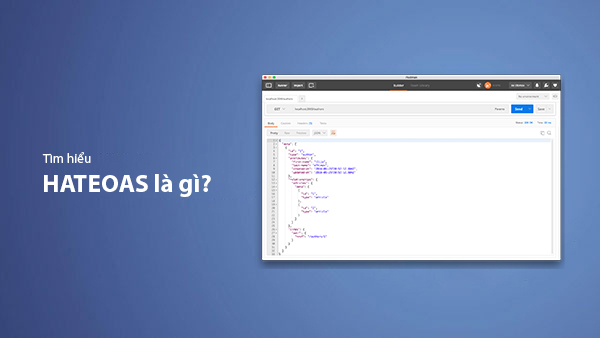
What is HATEOAS? How to Build APIs Using HATEOAS
Learn about HATEOAS, an important concept in API development, and how to build APIs using HATEOAS to improve interactivity and scalability.

What Is GraphQL? The Advantages of GraphQL Over REST API
Explore GraphQL, a modern API technology, and why it outperforms REST API in many web development scenarios.
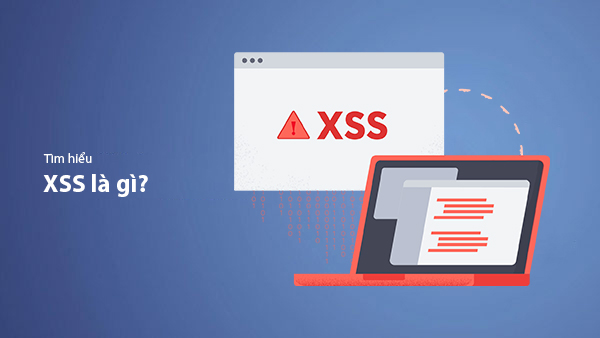
What is XSS? Signs of Detection and Effective Prevention Methods
Learn about XSS, signs of detection, and effective prevention methods for XSS attacks in websites.

